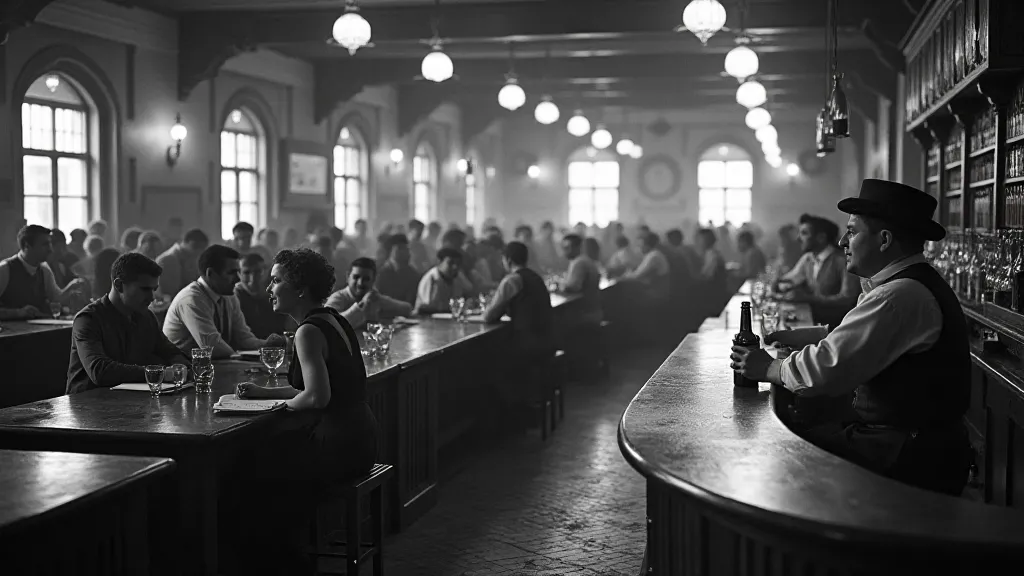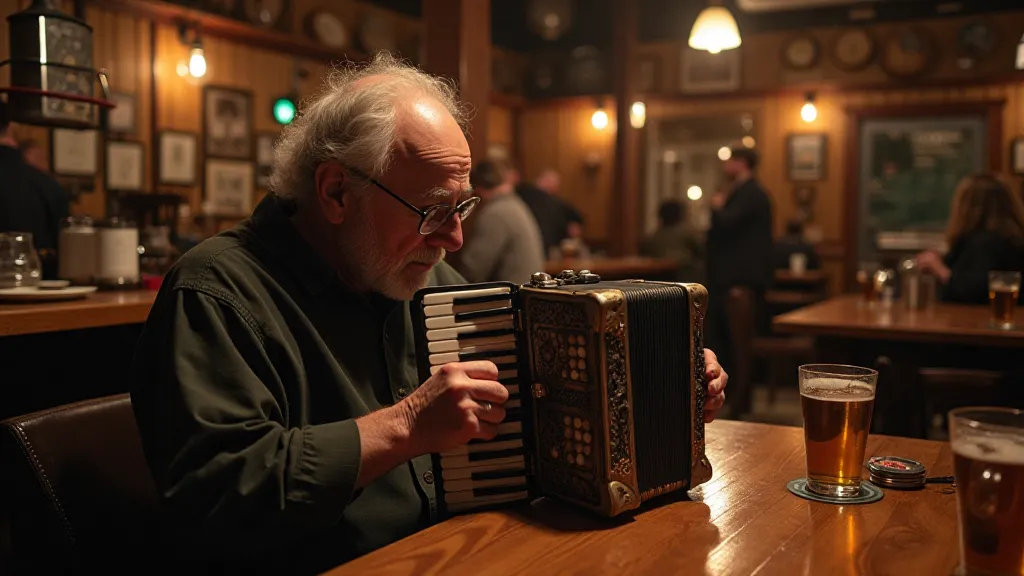The Taproom's Tapestry: Examining the Social Hubs of Local Breweries
The clinking of glasses, the murmur of conversation, the scent of malt and hops – these are the hallmarks of a thriving taproom. More than just a place to acquire a pint, local breweries’ taprooms have become vital community hubs, weaving themselves into the fabric of our towns and cities. But this wasn't always the case. The modern taproom, a gathering place steeped in history and craftsmanship, has a story all its own. It’s a story intertwined with the ebb and flow of beer history, the revival of local pride, and the persistent human need for connection.

A History of Gathering: From Beer Gardens to Industrial Spaces
The concept of a dedicated space for enjoying beer isn’t new. Throughout history, beer has been consumed socially. Think of the medieval alehouses, the 19th-century beer gardens of Europe, or the German *Bierkeller* – all designed as places to relax, socialize, and escape the daily grind. Early American breweries often mirrored this, operating saloons that served beer alongside other spirits. However, the rise of Prohibition in the early 20th century dealt a devastating blow to the brewing industry and significantly curtailed public spaces for beer consumption.
Following Prohibition’s repeal in 1933, large-scale industrial breweries largely dominated the landscape. Their focus shifted toward production and distribution, leaving little room for the kind of localized, community-focused taproom we cherish today. The rise of national brands prioritized efficiency and cost-effectiveness, diminishing the importance of personalized experiences. These industrial breweries viewed the “taproom” as a minor distribution point, not a space for building relationships. The focus was purely on volume, often sacrificing flavor and nuance in the process. The raw ingredients themselves – the barley, the hops, the water – were treated as commodities rather than precious resources influencing the final taste.
The Craft Beer Renaissance and the Rebirth of the Taproom
The late 20th century witnessed a remarkable shift: the craft beer renaissance. Fueled by a desire for quality, variety, and authenticity, small, independent breweries began to emerge. These pioneers, often operating out of repurposed warehouses or garages, reintroduced traditional brewing techniques and innovative flavor profiles. They realized that the origin of those ingredients – the land they grew from – significantly shaped the beer's character. It’s a connection often explored in detail on sites dedicated to Grainscapes: The Agricultural Tapestry Woven into Local Brews, highlighting how the specific terroir contributes to the distinctive flavor profiles of various beers. Crucially, they understood the importance of creating a space where customers could interact with the brewers, learn about the process, and build a sense of community.
The taproom became the heart of this resurgence. No longer simply a place to buy a beer, it transformed into a destination. Brewers started hosting events – live music, food trucks, brewery tours – that fostered a sense of belonging. This direct interaction—talking with the person who crafted your drink—was a stark contrast to the anonymous experience of purchasing mass-produced beer from a grocery store. It humanized the beer-making process and built a loyalty that extended far beyond the taste of the ale. This marked a return to the values that had initially spurred communal drinking: connection, shared experience, and appreciation for the artistry involved.
More Than Just Beer: The Taproom as a Community Stage
Consider the craftsmanship required, not just in the brewing process, but in the design and maintenance of the taproom itself. Many older breweries occupy beautifully restored buildings, showcasing architectural details from a bygone era. Imagine the care taken to repair a weathered brick wall or restore ornate molding – these elements aren't merely decorative; they contribute to the taproom's unique character and charm.
The ambiance also matters immensely. The selection of furniture, the lighting, even the music played all contribute to the overall experience. Some taprooms deliberately evoke a specific era – a Victorian pub, a 1920s speakeasy – while others embrace a more modern, industrial aesthetic. The goal is always to create a welcoming space where people feel comfortable spending time and connecting with others.
The role extends further. Local breweries often use their taprooms as platforms to support other small businesses. Collaborations with local artists, food vendors, and musicians are commonplace. They become a hub for showcasing local talent and strengthening the local economy. It’s this holistic approach, this dedication to the community beyond just the beer itself, that truly defines a thriving taproom. The interconnectedness of these businesses – the brewery, the artist, the musician, the food truck owner – builds a richer, more vibrant local ecosystem.
The Echoes of the Past: Accordions and a Sense of Nostalgia
There's a certain resonance, isn's there, when a local brewery chooses to incorporate elements of the past into its ambiance? I'm thinking specifically of antique accordions – instruments that conjure images of lively gatherings, family celebrations, and simpler times. The warm, expressive tones of an accordion evoke a sense of nostalgia and connection to our shared heritage. These instruments, often rescued from dusty attics or antique shops, become a visual and auditory reminder of the enduring human desire for community and connection.
Restoring an antique accordion is a labor of love, requiring patience, skill, and a deep appreciation for the craftsmanship involved. Similar to the process of brewing a good beer, it’s a slow and meticulous process that rewards dedication. The repair of bellows, the re-gluing of keys, the careful cleaning of the instrument – each step is a testament to the enduring quality of the original design. And just as a well-crafted beer enhances the taste buds, a restored accordion can fill a room with joyous music.
Collecting antique musical instruments, like appreciating a rare and well-brewed beer, is more than just about possession; it’s about preserving a piece of history and sharing its beauty with others. It’s a way to honor the artisans who created these instruments and to keep their legacy alive. Think about the stories those instruments could tell – the weddings they graced, the dances they accompanied, the laughter they’s witnessed. They represent a tangible link to the past, adding a layer of depth and character to the taproom experience. This appreciation for tradition extends beyond music; it’s a broader respect for heritage and artisanal practices, similar to how breweries strive to honor classic brewing techniques while innovating with new flavor combinations.

The Evolution of Brewing Styles and Regional Identities
The influence of history and tradition isn't just reflected in the ambiance of a taproom. It's deeply interwoven with the evolution of brewing styles themselves. The ingredients used, the techniques employed, and even the final presentation of the beer often carry echoes of a region's past and the cultural influences that shaped it. For instance, the types of grains used, and the overall style of spirit production in a region, often intersect, impacting the landscape and creating a layered history. The complex relationship between breweries and other spirit producers is well explored in resources like From Still to Stein: How Distilleries Have Shaped the Landscape of Local Breweries, highlighting the interconnected nature of beverage production.
Looking Ahead: The Taproom's Enduring Role
The modern taproom has come a long way from its humble beginnings. It is now a vital part of the local economy, a social hub for communities, and a showcase for craftsmanship and creativity. As the craft beer industry continues to evolve, the taproom will undoubtedly play an even greater role in shaping the future of beer culture. The ability to adapt, to innovate, and to remain true to the values that have made them so successful – a commitment to quality, community, and connection – will be key to their continued success. The experimentation with flavor profiles and brewing techniques is only going to intensify, leading to exciting new combinations and experiences for beer lovers. The rise of fusion brewing styles, blending different traditions and ingredients, is pushing the boundaries of what's possible, creating unique and exciting beers that reflect a globalized palate. Further exploration of these innovative styles can be found on The Confluence of Cultures: Exploring Fusion Beer Styles in Craft Brewing.
So, the next time you find yourself in a local brewery’s taproom, take a moment to appreciate the history, the craftsmanship, and the sense of community that surrounds you. It’s more than just a place to get a pint; it’s a living tapestry woven from the threads of local history, creativity, and connection.




![The Copper Constellation: Mapping the Lost Breweries of [Region Name]](/thumbs/the-copper-constellation.webp)
